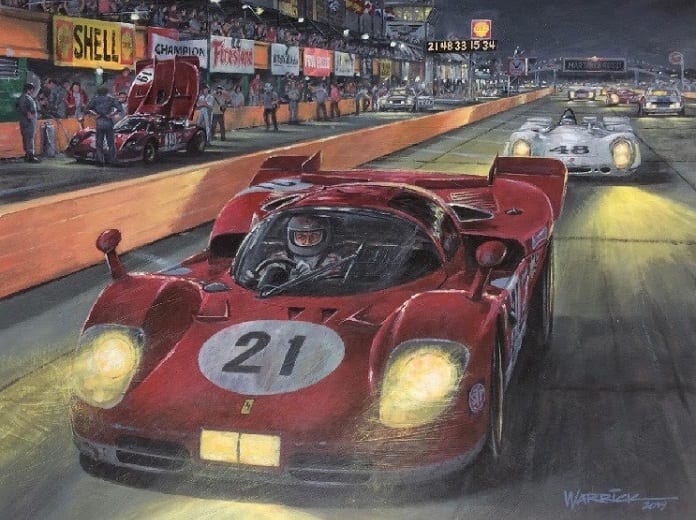Andretti was more than five miles behind the leader with 90 or so minutes left in the race. And, he’d already driven more than five hours in the No. 19.
“Physically, I was not fresh,” he said. “So, to go out there and run qualifying laps at the end of the 12 hours, it was a little bit tough.”
On top of that, the No. 21 likely would need a late splash of fuel to make it to the finish, whereas the No. 48 Porsche was good to go to the checkered flag.
“I had to really, really hoof it,” Andretti said. “I had to qualify every lap. That’s what it was and that’s why I used up more fuel. I think under normal race pace, we probably could have made it to the end, but I was like qualifying every lap. That’s the only chance I had.
“I think that’s the first time that I did turn one flat, and I couldn’t do that with the Spyder. Actually, the Coupe felt and handled even a little bit better. I think it was because of torsional stiffness. The Coupe actually felt better than my Spyder, but the Spyder was lighter, so it accelerated a little bit better.
“But lap-time wise at that point, I think I was running as quick as I could have ever run, even with the other one if I needed to, but the car felt good. The car felt good to me, and that’s why I just really took it to the limit. Somehow, it paid off.”
Indeed, it did. Andretti caught and passed Revson, putting the No. 21 Ferrari into the lead.
“I knew that I might have to stop, so I just kept driving like it was qualifying,” he said. “Sure enough, the reserve light comes on. In those days when you came in for fuel, you had to get out of the car quick and then get back in and turn the engine off.
“So, I came in – there was no pit-road speed, so I came in totally sideways, nearly killing people. As soon as I hit the ground, Forghieri threw me back in, because they put about maybe two liters of fuel in there.”
The late splash-and-go cost Andretti the lead, but not for long. Andretti quickly chased Revson down again.
“It was a lap later, I passed him going on the back straightaway,” Andretti said. “Then, I think at that point, he gave up. Poor guy. I felt bad for Steve, actually.”
From there, Andretti pulled away, winning by 23.8 seconds.
“You know, I’m credited with a win, but I don’t feel bad taking it,” Andretti said. “Because I felt we deserved it with the other car, and this was a team car. I felt that if those guys (Giunti and Vaccarella) would not have stepped up their pace, they wouldn’t have won.
“I thought that I was kind of a man possessed out there a little bit. So, I consider that one of the good wins of my career in that sense. To be able to extract that much out of the car right at the end of a 12-hour race – Sebring at that – I felt pretty satisfied.”
That’s saying something. This is a man who’s won the Indy 500, Daytona 500, the Formula 1 World Championship, IndyCar championships and countless other F-1, IndyCar, stock car, sports car, sprint car and other races.
“I would say the way everything happened at the event, I don’t think you could duplicate it,” Andretti concluded. “With our regular car, we pretty much dominated to be that far in the lead, and then have to drop out. And then jump in a sister car, to be able to win, everything was amazing.
“It was like the perfect storm. Yeah, it’s never happened again in my career, for sure.”
This year’s Mobil 1 Twelve Hours of Sebring Presented by Advance Auto Parts falls on Saturday, March 21, 2020 – 50 years to the day since Andretti’s historic victory.
The race starts at 10:30 a.m. on CNBC.
